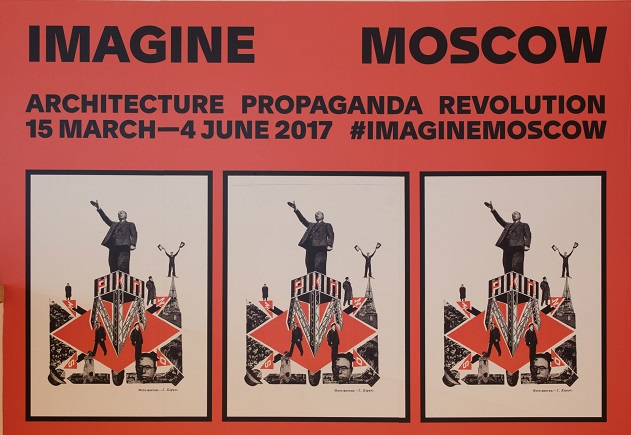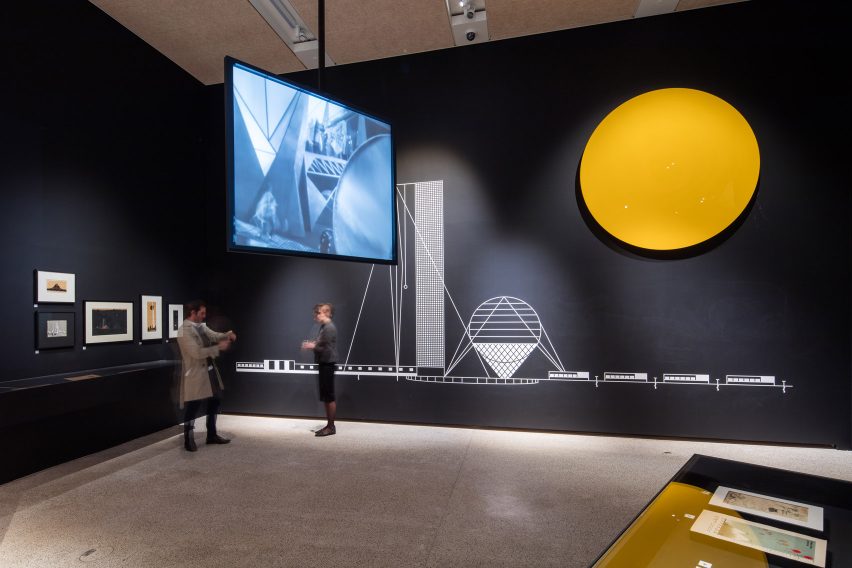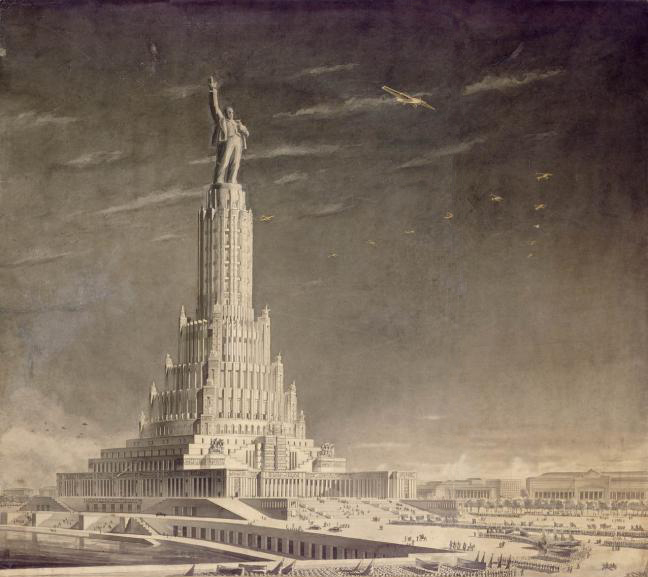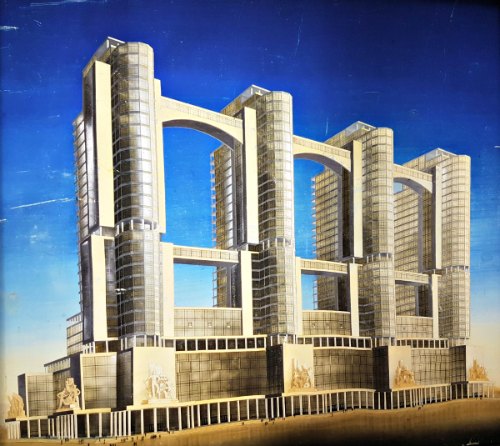Main author
Michael BrooksImagine Moscow exhibition
In March 2017, Designing Buildings Wiki went to the London Design Museum to see the Imagine Moscow exhibition, marking the centenary of the Russian Revolution.
The exhibition presents six different ‘visions of Moscow’ imagined by architects and designers from 1917 until the early-1930s, a heady and exciting post-revolutionary era as the possibilities of the new ‘scientific society’ became clear. The vaulting ambition of this new generation is easily grasped in the rarely-seen material gathered for the displays.
Whether it’s the Supremacist artworks exploring new dimensions and patterns, or pro-literature propaganda posters as part of the new educatory push, there is the inescapable impression of a society’s utopian muscles being flexed, but that would atrophy in just a few years with the technocratic bureaucracy of Stalin.
The exhibition focuses on six key projects that exemplify the heights of ambition:
- Communal House: A scheme to introduce communal housing that would eliminate the nuclear family.
- Cloud Iron: A network of horizontal skyscrapers containing offices and apartments.
- Lenin Institute: An enormous library that would serve as the ‘accumulated knowledge’ of the human race.
- Health Factory: A Black Sea retreat that would provide respite and leisure for urban workers.
- Commissariat of Heavy Industry: A building that would celebrate the importance of industry to socialism.
- Palace of the Soviets: A grand monument to Lenin, and the tallest building in the world.
The exhibition succeeds in capturing the sense of exhilaration and dynamism inherent in these projects, with large-scale illustrations and, in the case of the Palace of the Soviets, a giant replica of the forefinger for the 100 m-high statue of Lenin that would stand tall over Moscow.
This, and the fascinating section on the design competition for Lenin’s Red Square mausoleum, reveal the idolatry and hero-worship as, despite the Soviet Union’s technological and modernist aspirations, just another form of religion.
The exhibition serves as a welcome reminder of a time when architects, designers and engineers genuinely believed they could remake society and, as a result, human beings themselves.
Even though the USSR and its methods have long since been discredited – the section on the rigid planning of daily routine amply demonstrates the totalitarian nightmare that was being created – it should still perhaps be considered that for architecture to have any kind of positive influence on society it needs something of the same towering ambition and imagination.
Imagine Moscow runs until the 4th June 2017.
For more information, see Design Museum.
[edit] Related articles on Designing Buildings Wiki
- Bridge Engineering exhibition
- Buildings that were never realised.
- Constructivist architecture.
- Engineering the World - VandA Museum
- London Design Museum.
- Nowa Huta - Communist tour review.
- Owen Hatherley - Landscapes of Communism.
- Socialist realism in a post-war Czechoslovak new town.
- Spomeniks.
- St. Basil’s Cathedral.
- The Japanese House: Architecture and Life after 1945.
- The Kremlin.
Featured articles and news
Homes England creates largest housing-led site in the North
Successful, 34 hectare land acquisition with the residential allocation now completed.
Scottish apprenticeship training proposals
General support although better accountability and transparency is sought.
The history of building regulations
A story of belated action in response to crisis.
Moisture, fire safety and emerging trends in living walls
How wet is your wall?
Current policy explained and newly published consultation by the UK and Welsh Governments.
British architecture 1919–39. Book review.
Conservation of listed prefabs in Moseley.
Energy industry calls for urgent reform.
Heritage staff wellbeing at work survey.
A five minute introduction.
50th Golden anniversary ECA Edmundson apprentice award
Showcasing the very best electrotechnical and engineering services for half a century.
Welsh government consults on HRBs and reg changes
Seeking feedback on a new regulatory regime and a broad range of issues.
CIOB Client Guide (2nd edition) March 2025
Free download covering statutory dutyholder roles under the Building Safety Act and much more.
Minister quizzed, as responsibility transfers to MHCLG and BSR publishes new building control guidance.
UK environmental regulations reform 2025
Amid wider new approaches to ensure regulators and regulation support growth.
BSRIA Statutory Compliance Inspection Checklist
BG80/2025 now significantly updated to include requirements related to important changes in legislation.



























